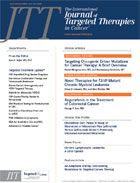Everolimus Combination Therapy May Mitigate Trastuzumab Resistance
Adding everolimus to conventional therapy slowed the progression of trastuzumab-resistant advanced breast cancer and provided clues to the origin of trastuzumab resistance.
Ruth M. O’Regan, MD
Adding the mTOR inhibitor everolimus to conventional therapy slowed the progression of trastuzumab-resistant advanced breast cancer, and, in the process, provided clues to the origin of trastuzumab resistance, according to the results of the BOLERO-3 trial presented at the 2013 American Society of Clinical Oncology (ASCO) Annual Meeting.
“This is the first phase III study showing a benefit of mTOR pathway inhibition in HER2-positive breast cancer,” said Ruth M. O’Regan, MD, lead author of the study and associate professor of Medicine at Emory University in Atlanta, Georgia. “Targeting the mTOR pathway is a viable approach to maximize the benefit of trastuzumab-based therapy. The combination of everolimus plus vinorelbine plus trastuzumab may be considered an appropriate option in trastuzumab-resistant HER2-positive advanced breast cancer.”
Although trastuzumab has been shown to significantly improve outcomes for patients with HER2-positive breast cancer, patients who develop metastatic disease almost inevitably have trastuzumab resistance. The mechanisms by which resistance occurs remain unknown, but include the possibility of activation of the mTOR pathway, which everolimus targets.
Two small phase Ib trials demonstrated everolimus activity in trastuzumab-resistant HER2-positive breast cancer, supporting the hypothesis that inhibiting the mTOR pathway might reverse trastuzumab resistance, said O’Regan. Everolimus is currently approved for use in HER2-negative breast cancer but remains investigational in HER2-positive disease.
The international BOLERO-3 trial enrolled 569 women with locally advanced or metastatic HER2-positive breast cancer. All patients had progressed during or after treatment with trastuzumab and a taxane, and some with lapatinib. Investigators in a half-dozen countries randomized patients to a combination of trastuzumab and vinorelbine with or without everolimus. Treatment continued until progression or development of unacceptable toxicity. The trial had a primary endpoint of progression-free survival (PFS); secondary outcomes included overall survival (OS), overall response rate, and time to deterioration of performance status.
About half of the patients had received trastuzumab for a year or more, and half for less than a year. All of the patients had received a taxane in addition to trastuzumab. One-quarter of the patients in each group had a treatment history that included the anti-HER2 agent lapatinib. The median time from last trastuzumab treatment to randomization was 1.4 months. More than 40% of patients had received two or more prior regimens.
Patients treated with everolimus in addition to trastuzumab and vinorelbine had a median PFS of 7 months compared with 5.78 months in the trastuzumab-vinorelbine and placebo group.
Treatment continued for 24 weeks in both arms. The 1+ month difference in median PFS translated into a hazard ratio of 0.78 in favor of everolimus (P=.0067). An extensive subgroup analysis showed a consistent benefit for the addition of everolimus, regardless of age, prior lapatinib therapy, nature and duration of prior trastuzumab therapy, performance status, hormone-receptor status, or visceral involvement. O’Regan noted that patients younger than age 65 and those who had received prior trastuzumab early in the course of treatment seemed to derive greater benefit from everolimus.
Data have not matured sufficiently for an analysis of OS. Nonetheless, the preliminary results showed lower mortality in the everolimus group (36.3% vs 41.1%). The treatment arms had similar response rates of 41% with everolimus and 37.2% with placebo. Additionally, 48.2% of the everolimus group had stable disease compared with 41.4% of the placebo group. Neither difference reached statistical significance.
Adverse events occurred more frequently in the everolimus group. The most common events associated with everolimus (all grades) were stomatitis (63%), fatigue (43%), pyrexia (39%), diarrhea (38%), nausea (35%), decreased appetite (33%), constipation (30%), and rash (25%). Grade 3 events were infrequent and grade 4 events rare.
The addition of everolimus did not adversely affect quality of life, as indicated by the similarity of time to deterioration of performance status in both groups, said O’Regan.
O’Regan R, Ozguroglu M, Andre F, et al. Phase III, randomized, double-blind, placebo- controlled multicenter trial of daily everolimus plus weekly trastuzumab and vinorelbine in trastuzumab-resistant, advanced breast cancer (BOLERO-3).J Clin Oncol
